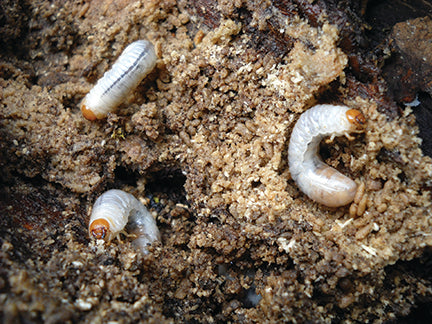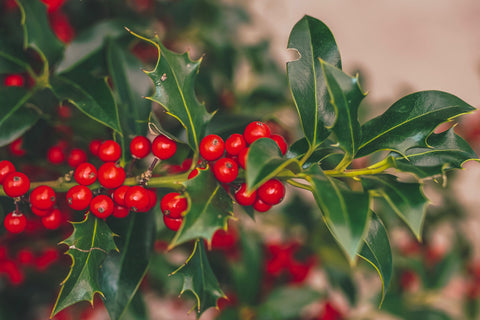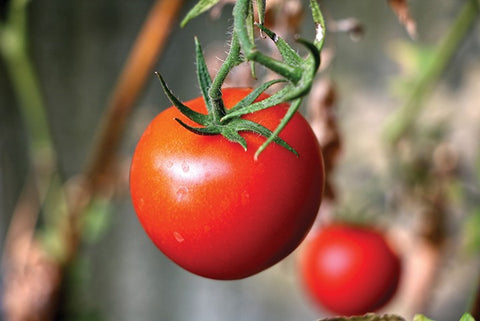According to Dr. Michael Klein, a leading entomologist in biological control of Japanese Beetles in turf and nursery environments, “milky disease” is a naturally occurring condition in white grubs from soils that contain specific bacterium spores, however, for larvae to become infected with milky disease at a level that provides effective control, very specific conditions must be present.
Included below are conditions and key points he has provided:
The disease affects white grubs of Japanese Beetles. A few strains of the bacteria spores can also affect other beetle grubs that infest soil as well. The spores do not cause disease in people or any other animals which fit well for The Mill’s “5B” Principles of Lawn Care.
When soils do not have adequate levels of spores during the time larvae are aggressively feeding during ideal conditions, we can add more with a product called Milky Spore.
Spores will stay present and increase over time, so repeated applications of Milky Spore are usually not necessary once effective levels have been achieved which can take up to 3 years following an initial application. While researchers have found active spores in soils that were treated decades ago, new beetle grubs can infest your lawn if neighboring properties don’t have adequate control of Japanese Beetles and adult beetles start the cycle each year. With enough spores built up in the soil, those newly hatched grubs will die in the late fall and not start a new life cycle.
Using insecticides to kill grubs in the soil is counterproductive when using Milky Spore for natural control methods. The more grubs in the soil when you apply Milky Spore, the better. Grubs need to feed on the spores to get infected with milky disease. Infected grubs release more spores when they die so, although you won’t have a rapid kill of grubs initially, you will have long term control with a product that is safe for the environment and all life other than a few strains of white grubs. Each year, infected grubs will increase the level of spores in the soil.
A Common Misconception: "The disease just has to be in the soil to work."
Dr. Klein explains that very specific conditions must exist for the spores to infect larvae. To become infected, a grub has to be actively feeding in warm soil and ingest some spores. Just being in the same soil as the spores doesn't harm grubs, and if the soil is cooler than 65 degrees, the spores just pass right through without infecting the grubs.
There is an urge to control grubs in the spring when they begin to be noticeable. But the soil temperatures are not conducive to infecting grubs at this time. Overwintered grubs rise as soil begins to warm up. They nibble on grass roots for a short time in April and then stop feeding to go into a pupae stage in May before emerging as beetles to feed on plant foliage during the summer. Adult Beetles lay eggs on the surface of soil which hatch to a new crop of grubs and begin burrowing and feeding on roots in August and September. The spring feeding is short and not as stressful to established grass as the fall feeding is although grubs can do damage to new spring seedings. The reasons late summer is the best time to control grubs with Milky Spore are:
- Soil temperatures are above 65 F and Milky Spore consumed by grubs will cause an infection.
- Turf is still in summer dormancy and stressed from heat and potentially drought so grass is more susceptible to injury from grubs.
- Newly hatched grubs are voraciously feeding in the fall when night temperatures begin to cool off because they will need to get plumped up to survive winter temperatures.
- Grubs stay close to the surface and feeding where temperatures are warm for an extended period of time (August – October) until cold soil in late fall sends them burrowing deeper to overwinter. This is the time grass is trying to store carbohydrates in the root systems to overwinter as well so damage to turf by grubs is greater in the fall.
How do you know if grubs in your soil have Milky Disease? All grubs have a white color to them, so it is difficult to know. You can clip off a leg of a grub and check the fluid. Healthy grubs have a clear fluid, infected grubs have a milky white fluid. Infected grubs in the soil are good, once infected, the grub dies and releases more spores into the soil. Infection rates are slow to grow since soil conditions have to be right for larvae to get infected after consuming the spore.
The second part to the equation of controlling grubs, is to control the population of emerged adult beetles. Using traps early in the summer can prevent adults from laying eggs and starting a new cycle of grubs. Realistically, it can take 3 years of natural control methods to get grubs populations minimized. In areas of heavy adult beetles and foliage damage to trees and garden plants, insecticides can be used to prevent adults from starting a new cycle of grubs in your lawn.
Milky Spore is a natural, biological control for susceptible larvae that is a great organic and sustainable option if used at the Right Time.














